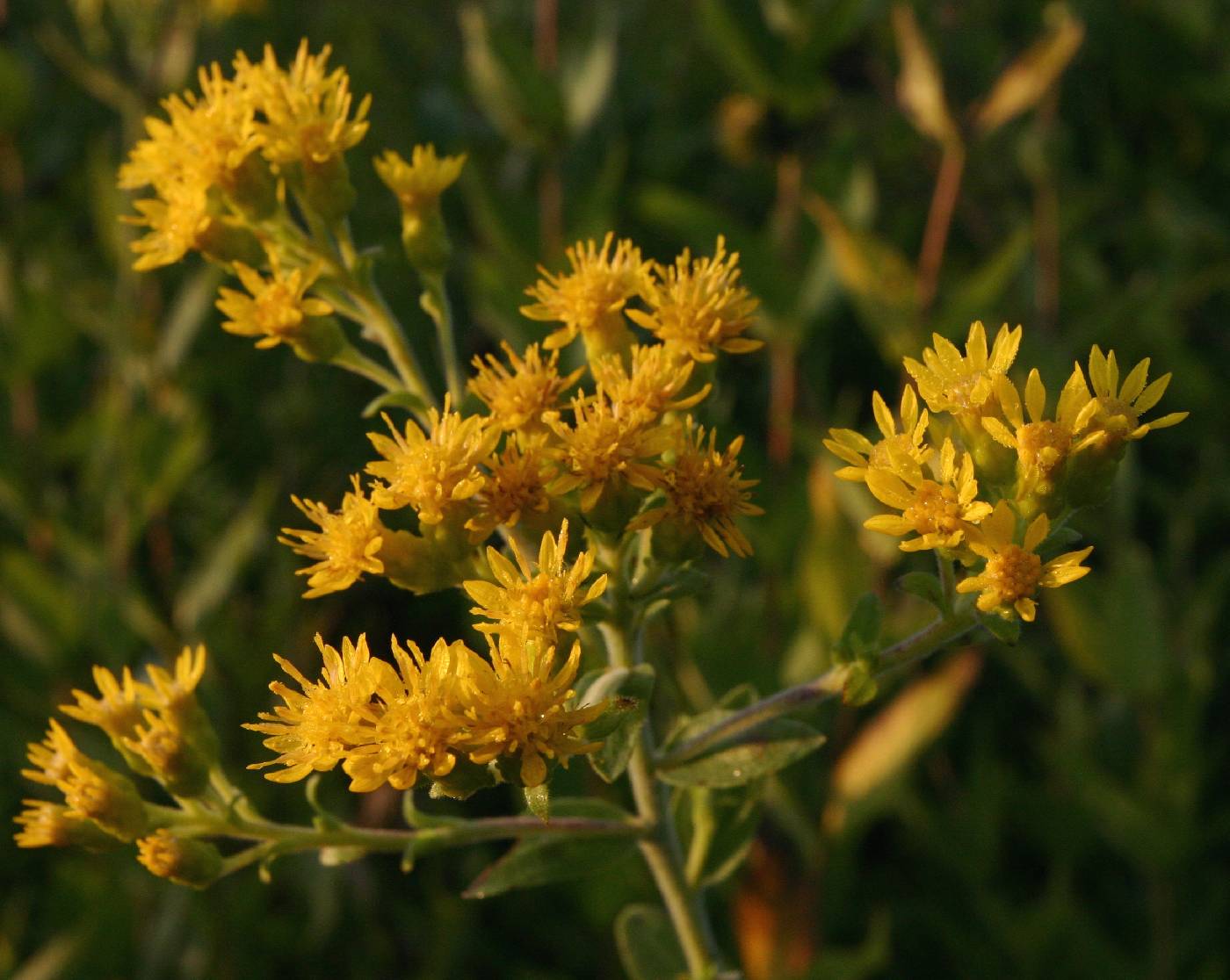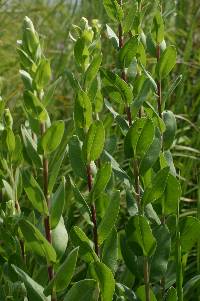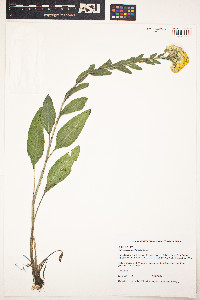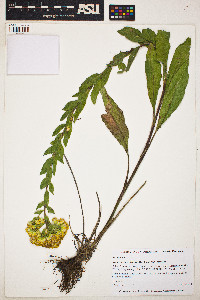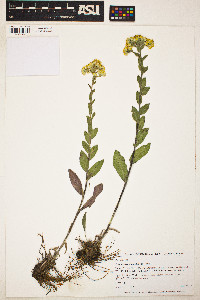|
|
|
|
Family: Asteraceae
|
Plants 30-150 cm ; caudices branching, woody. Stems 1-10+, erect, stout, hairy. Leaves: basal and proximal cauline usually present at flowering, abruptly narrowed to long petioles, blades ovate to rhombic, 80-200 × 24-50 mm, firm, flat, margins entire to crenate, sometimes undulate, apices obtuse to acute, faces densely hairy; mid to distal cauline sessile, blades ovate, 30-50 × 15-17 mm, stiff, greatly reduced distally, margins entire or finely serrate, sometimes undulate, apices acute to obtuse. Heads 9-190, in corymbiform arrays, compact or branches long and spreading, densely hairy throughout. Peduncles 3-15 mm, strigillose-canescent, bracteoles 1-3, linear-lanceolate. Involucres campanulate, 6-8 mm. Phyllaries in 3-4 series, unequal, oblong, conspicuously striate (3-5 pronounced nerves), obtuse. Ray florets 6-13; laminae 1.4-5.4 × 1.2-1.9 mm. Disc florets 14-35; corollas 4.3-6.1 mm, lobes 0.6-1.1 mm. Cypselae (obconic) 0.8-1.7 mm (ribbed), glabrous or strigillose apically; pappi 3-4 mm. Solidago rigida is divided into three subspecies with distinct morphologies and partially overlapping ranges. Intermediates occur between the subspecies in areas of sympatry.
Plants 2.5-15 dm from a stout branched caudex; herbage densely pubescent with short spreading hairs, varying to subglabrous; lvs basally disposed, firm, slightly toothed or entire, the larger ones with elliptic, elliptic-oblong, or broadly lanceolate to broadly ovate, rounded to acutish blade 6-25נ2-10 cm, often exceeded by the long petiole; middle cauline lvs sessile or nearly so, 2-6 times as long as wide; infl dense, corymbiform, 5-25 cm wide; heads relatively large, the disk 5-10 mm wide; invol 5-9 mm, glabrous or puberulent, its bracts firm, broadly rounded, conspicuously striate; rays 7-14, 3-5 mm; disk-fls 17-35; achenes turgid or angular, 10-20-nerved; 2n=18, 36. Prairies and other dry, open places, especially in sandy soil; R.I., Conn., w. Mass., and N.Y. to Ga., w. to Alta. and N.M., more common westward. (Oligoneuron r.) Three vars. Gleason, Henry A. & Cronquist, Arthur J. 1991. Manual of vascular plants of northeastern United States and adjacent Canada. lxxv + 910 pp. ©The New York Botanical Garden. All rights reserved. Used by permission. |


